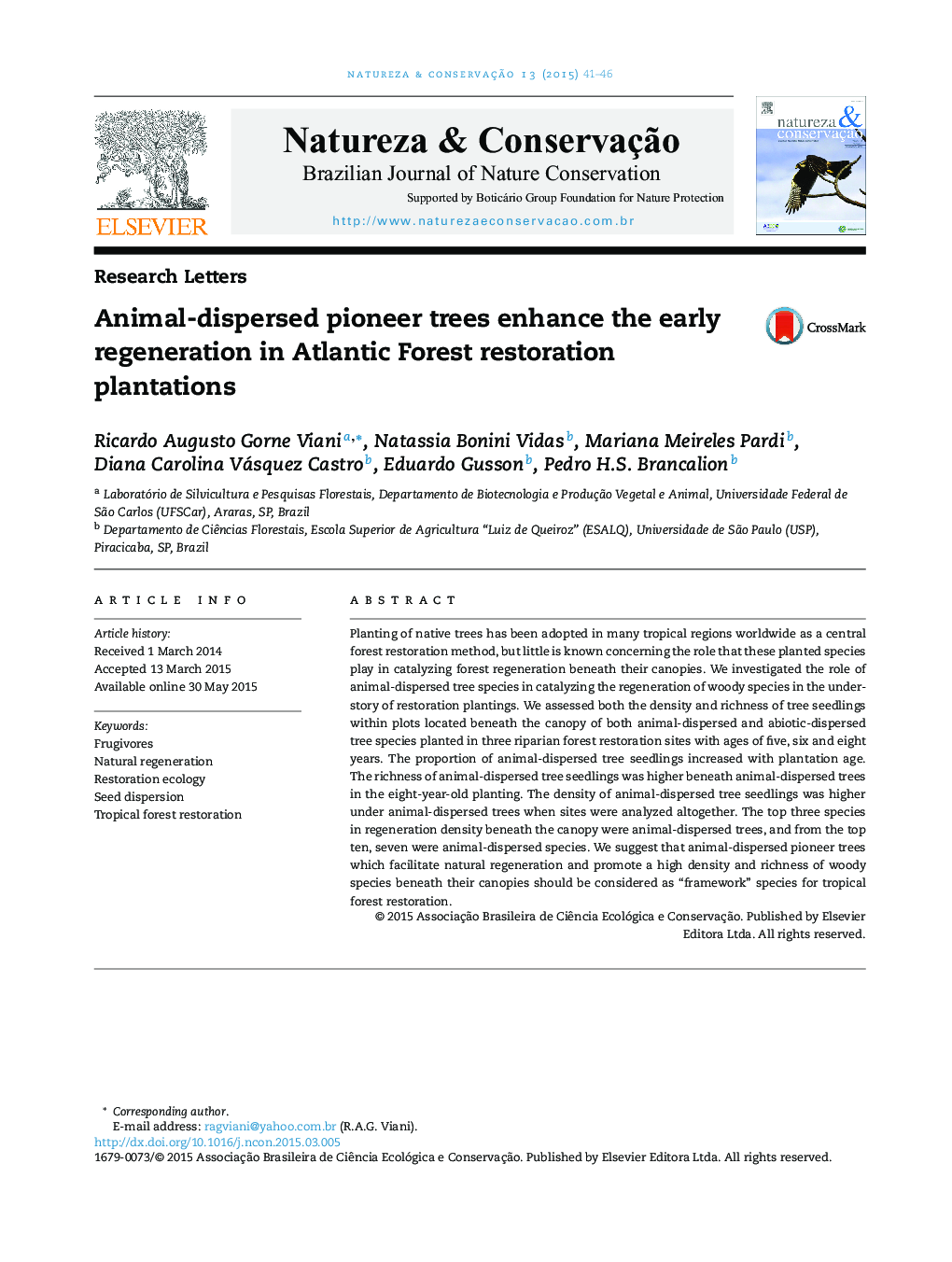| Article ID | Journal | Published Year | Pages | File Type |
|---|---|---|---|---|
| 4400827 | Natureza & Conservação | 2015 | 6 Pages |
Planting of native trees has been adopted in many tropical regions worldwide as a central forest restoration method, but little is known concerning the role that these planted species play in catalyzing forest regeneration beneath their canopies. We investigated the role of animal-dispersed tree species in catalyzing the regeneration of woody species in the understory of restoration plantings. We assessed both the density and richness of tree seedlings within plots located beneath the canopy of both animal-dispersed and abiotic-dispersed tree species planted in three riparian forest restoration sites with ages of five, six and eight years. The proportion of animal-dispersed tree seedlings increased with plantation age. The richness of animal-dispersed tree seedlings was higher beneath animal-dispersed trees in the eight-year-old planting. The density of animal-dispersed tree seedlings was higher under animal-dispersed trees when sites were analyzed altogether. The top three species in regeneration density beneath the canopy were animal-dispersed trees, and from the top ten, seven were animal-dispersed species. We suggest that animal-dispersed pioneer trees which facilitate natural regeneration and promote a high density and richness of woody species beneath their canopies should be considered as “framework” species for tropical forest restoration.
